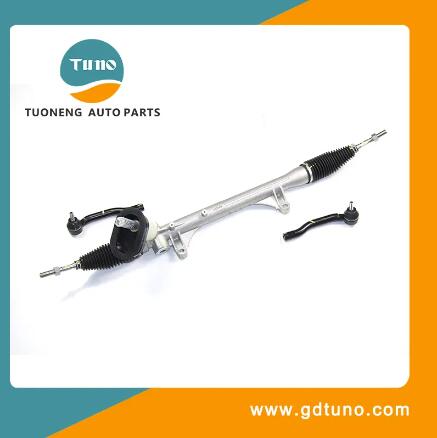How to Identify and Address Steering Rack Issues in Your Vehicle
2024-09-04
The steering rack is the heart of your vehicle's steering system, translating your steering wheel movements into the precise motion needed to turn your wheels. However, like any mechanical component, it can develop issues over time. In this blog, we'll explore how to identify common steering rack problems and what steps you can take to address them.
Signs of a Failing Steering Rack
1. Difficulty in Steering
One of the most noticeable signs of a steering rack issue is difficulty steering, especially at low speeds. If your steering wheel becomes stiff or unresponsive, it could indicate a problem with the steering rack or the power steering system. This issue should be addressed immediately to avoid potential safety hazards.
2. Uneven Tire Wear
If your tires are wearing unevenly, it could be due to a misaligned steering rack. When the rack is not functioning correctly, it can cause your wheels to be out of alignment, leading to uneven tire wear. Regular tire rotation and alignment checks can help detect this issue early.
3. Steering Wheel Vibration
A vibrating steering wheel, especially when driving on smooth roads, can indicate a worn-out steering rack. The vibrations occur because the rack is no longer providing the necessary stability and control, which can be dangerous at high speeds.
4. Leaking Power Steering Fluid
Power steering fluid is crucial for the smooth operation of your steering rack. If you notice a puddle of fluid under your vehicle, it could be a sign of a leak in the power steering system. Low fluid levels can lead to increased steering effort and potential damage to the rack.
5. Clunking or Knocking Noises
Unusual noises when turning the steering wheel are often a sign of a problem with the steering rack. These noises could indicate that the rack or its components are worn or damaged, requiring immediate attention.
Causes of Steering Rack Problems
1. Wear and Tear
Over time, the steering rack can wear out due to the constant friction and pressure it endures. This is especially true in older vehicles or those that have been driven extensively.
2. Fluid Contamination
Contaminated power steering fluid can lead to corrosion and wear inside the steering rack. Regularly checking and changing the power steering fluid can help prevent this issue.
3. Improper Maintenance
Neglecting regular maintenance, such as wheel alignment and fluid checks, can accelerate the wear on your steering rack. Proper care is essential to extending the life of this crucial component.
How to Address Steering Rack Issues
1. Regular Inspection
Schedule regular inspections of your steering system, especially if you notice any of the symptoms mentioned above. A professional mechanic can diagnose the issue and recommend the best course of action.
2. Fluid Maintenance
Keep an eye on your power steering fluid levels and ensure the fluid is clean. Contaminated or low fluid can cause significant damage to the steering rack over time.
3. Alignment Checks
Regular alignment checks can prevent uneven tire wear and reduce stress on the steering rack. Proper alignment ensures that your wheels are pointing in the right direction, reducing unnecessary strain on the rack.
4. Professional Repair or Replacement
If your steering rack is damaged or worn out, it's essential to have it repaired or replaced by a professional. Attempting to fix it yourself could lead to further damage or even compromise your safety on the road.
Conclusion
The steering rack plays a vital role in your vehicle's handling and safety. By being aware of the signs of steering rack issues and taking proactive steps to address them, you can ensure your car remains in optimal condition. Regular maintenance and timely repairs are key to avoiding costly problems and keeping your vehicle safe on the road.


